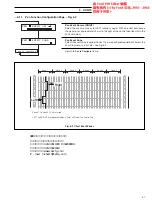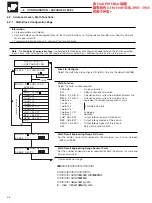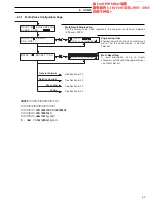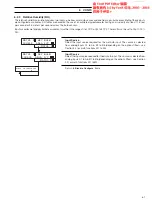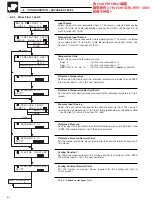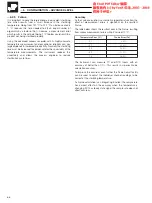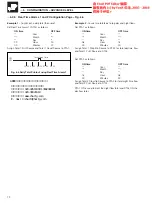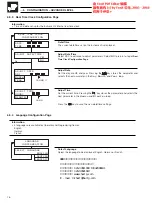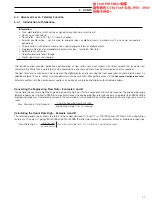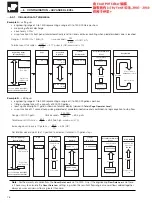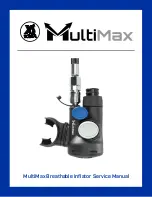
65
Time (minutes)
C
A
B C
E F
140
120
100
80
60
40
20
D
6
CONFIGURATION – ADVANCED LEVEL…
6.2.5
Fvalue
Application
The application of Fvalue measurement enables sterilizing
cycles to be shortened, relative to the traditional time versus
temperature cycles commonly adopted.
This in turn leads to greater throughput, reduced energy
consumption and minimization of product degradation due to
over exposure to high temperatures.
The most widely used method of sterilization is to heat the
product after it has been sealed into its final container, using
saturated steam maintained at a high temperature in a
pressurized autoclave oven. Steam is used because of superior
heat transfer characteristics, compared to dry air.
Heat’s ability to kill micro-organisms varies with the type of
organism and increases exponentially with increasing
temperature. By definition the steam sterilization (Fo) has a
target sterilization of 121.1
C and dry heat sterilization (Fh) a
target sterilization temperature of 170
C.
Example
– an increase of 10
C from 121.1 to 131.1
C in the
steam sterilizing temperature of the
Bacillus Stearo-thermphilus
organism increases the death rate by a factor of ten.
The change in sterilization temperature which causes a factor-
of-10 change in the death rate is unique to each organism and
is called the Z value.
Although 121.1
C is universally accepted as a reference for
steam sterilization processes, the actual sterilizing temperature
varies, depending on the products involved and on each
sterilization process.
Calculation – Fig. 6.3
The advanced process recorder’s
advanced Fvalue
implementation takes the Fvalue into account and allows the
process engineer to compute both steam (Fo) and dry heat (Fh)
results, with user defined target sterilization temperatures and Z
values.
The function implemented within the instrument can be used to
calculate any Fvalue with the general formula:
Fvalue(t) = Fvalue(t – 1) +
60
sample rate
(
)
(T
o
– T
t
)
Z
(
10
)
Where:
Fvalue(t)
– current Fvalue sum
Fvalue(t – 1)
– Fvalue sum at last sample
T
o
– measured temperature
T
t
– target sterilizing temperature
Z
– temperature interval representing a
factor of 10 reduction in killing efficiency
(Z factor)
Sample Rate
– 0.48 seconds
The Fvalue sum (in minutes) gives an equivalent time at the
target sterilization temperature taking into account the time
taken to approach and the time exceeding the target sterilization
temperature.
Example
– A typical steam sterilizing cycle – see Fig. 6.3.
The period AB is the chamber evacuation part of the cycle, when
the chamber is alternatively evacuated and purged with steam
to remove air. The ramp up to final sterilizing temperature starts
at B. The thermal conductivity of the load determines the time
taken to achieve point D, but is typically 30% of the total cycle
time. It is in the area, C D, and E F, that Fvalues make their
contribution to shortening sterilization time, by accumulating
credit for the time spent approaching and receding from the
sterilizing temperature.
Fig. 6.3 Typical Steam Sterilization Cycle

